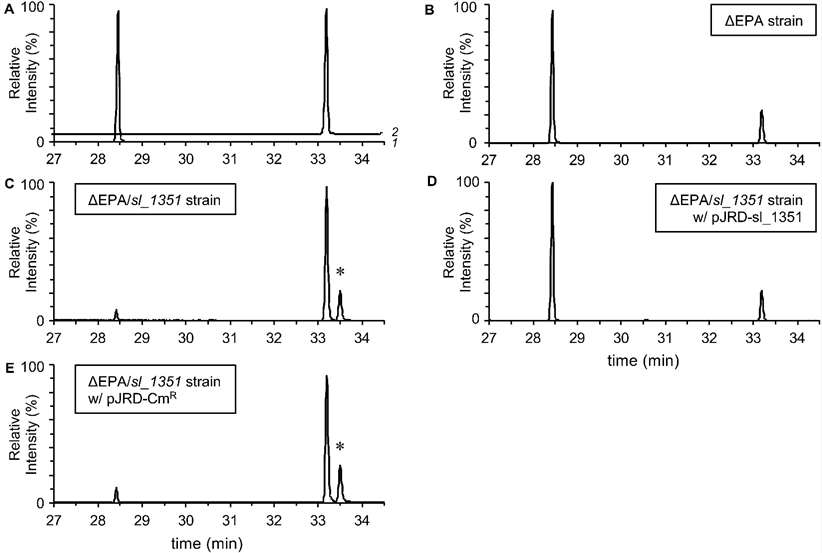Eicosapentaenoic Acid (EPA) Analysis
Submit Your InquiryWhat is Eicosapentaenoic Acid (EPA)?
Eicosapentaenoic acid (EPA) is an essential omega-3 fatty acid categorized as a polyunsaturated fatty acid (PUFA). It consists of 20 carbon atoms and has five double bonds. The body synthesizes EPA from alpha-linolenic acid (ALA) through enzymatic reactions. It is primarily present in cold-water fish like salmon, mackerel, and tuna, as well as certain algae and marine organisms.
Why is EPA Analysis Needed?
Firstly, it enables researchers and scientists to accurately determine the concentration of EPA in various samples, including biological tissues, food products, and environmental samples. This analytical insight is crucial for assessing the nutritional composition and potential health benefits associated with different sources of EPA.
EPA, along with other omega-3 fatty acids, has been extensively studied due to its numerous health benefits. It plays a vital role in maintaining cardiovascular health, reducing inflammation, and supporting optimal brain function. Therefore, precise analysis of EPA levels in different sources provides valuable information for evaluating their nutritional value and potential impact on human health.
Secondly, EPA analysis is indispensable for evaluating the effectiveness of EPA supplementation or dietary interventions. By monitoring EPA levels before and after specific treatments or dietary modifications, you gain valuable insights into the absorption, metabolism, and bioavailability of EPA within the body. This knowledge aids in optimizing therapeutic strategies and enhancing our understanding of how EPA influences health outcomes.
Lastly, EPA analysis plays a pivotal role in quality control and regulatory compliance within the food and nutraceutical industries. Accurate determination of EPA content ensures that products meet the highest standards of integrity and labeling accuracy. Compliance with regulatory guidelines is crucial to ensure that EPA-enriched products provide the expected health benefits to consumers.
EPA Analysis Services in Creative Proteomics
EPA Quantification
Creative Proteomics utilizes cutting-edge mass spectrometry techniques to quantify EPA levels in different sample matrices. Our methods are highly sensitive, enabling precise detection even at low concentrations. Through our advanced analytical techniques, we can provide accurate measurements of EPA content, aiding in nutritional research, product development, and quality control.
EPA/DHA Analysis
EPA and DHA (docosahexaenoic acid) are important omega-3 fatty acids. we can precisely quantify EPA and DHA levels, even at low concentrations. This allows us to provide accurate measurements of EPA and DHA content in different sample types, including food products, dietary supplements, and biological samples.
Analysis Platform: Mass Spectrometry-based Techniques
Creative Proteomics offers an EPA analysis platform that utilizes advanced mass spectrometry (MS) techniques, including liquid chromatography-mass spectrometry (LC-MS) and gas chromatography-mass spectrometry (GC-MS). These techniques ensure high sensitivity, selectivity, and accuracy in EPA analysis.
For LC-MS analysis, our platform incorporates instruments such as the Agilent 6495 Triple Quadrupole LC/MS (QqQ-MS) and Thermo Scientific Orbitrap series High-Resolution Mass Spectrometers (HRMS).
- The Agilent 6495 QqQ-MS system provides exceptional sensitivity and dynamic range, enabling precise analysis of EPA even at trace levels. It is well-suited for targeted quantification and accurately measures EPA concentrations in various sample types.
- The Thermo Scientific Orbitrap series HRMS systems offer enhanced mass accuracy, resolution, and spectral acquisition speed. These features enable in-depth characterization and identification of EPA and its metabolites in complex samples. HRMS allows for comprehensive profiling of EPA-related compounds, providing valuable insights into its metabolic pathways and potential health effects.
In addition to LC-MS, our EPA analysis platform utilizes GC-MS technology. The platform includes advanced instruments such as the Agilent 7890B Gas Chromatograph and Thermo Scientific ISQ QD Mass Spectrometer.
- The Agilent 7890B Gas Chromatograph offers excellent separation capabilities and stability, enabling effective separation of EPA and related compounds in complex samples. It has a wide detection range and accurately measures EPA concentrations in different sample types.
- The Thermo Scientific ISQ QD Mass Spectrometer is a single quadrupole mass spectrometer with high sensitivity and reliability, enabling precise quantification and identification of EPA and its metabolites.
 GC/MS analyses of fatty acid compositions (Ogawa et al., 2020).
GC/MS analyses of fatty acid compositions (Ogawa et al., 2020).
Data Analysis and Reporting
At Creative Proteomics, we provide detailed data analysis and comprehensive reports for EPA analysis. Our team of experts performs rigorous data processing and quality control to ensure accurate and reliable results. Our reports include EPA concentration values, measurement uncertainties, and quality control parameters. We adhere to the highest scientific standards and deliver reports in a timely manner, empowering our clients with the information they need for their research and industry applications.
Sample Requirements for EPA Analysis
Creative Proteomics accepts various sample types for EPA analysis, including but not limited to:
- Biological Tissues: Tissue samples, such as adipose tissue, liver, and blood, can be submitted for EPA analysis. It is recommended to provide an adequate amount of tissue (e.g., 100 mg) to ensure accurate quantification.
- Food Products: Creative Proteomics analyzes food samples, including fish, seafood, oils, and supplements, for EPA content. It is advised to provide representative subsamples, ensuring homogeneity and minimizing analytical errors.
- Environmental Samples: Water, sediment, and marine organism samples can be submitted for EPA analysis in environmental studies. Proper sample collection and preservation techniques should be followed to maintain sample integrity.
It is recommended to consult with Creative Proteomics' scientific team for specific sample requirements, preservation methods, and any additional guidelines tailored to your research objectives.
Reference
- Ogawa, Takuya, et al. "Bioconversion from docosahexaenoic acid to eicosapentaenoic acid in the marine bacterium Shewanella livingstonensis Ac10." Frontiers in Microbiology 11 (2020): 1104.



